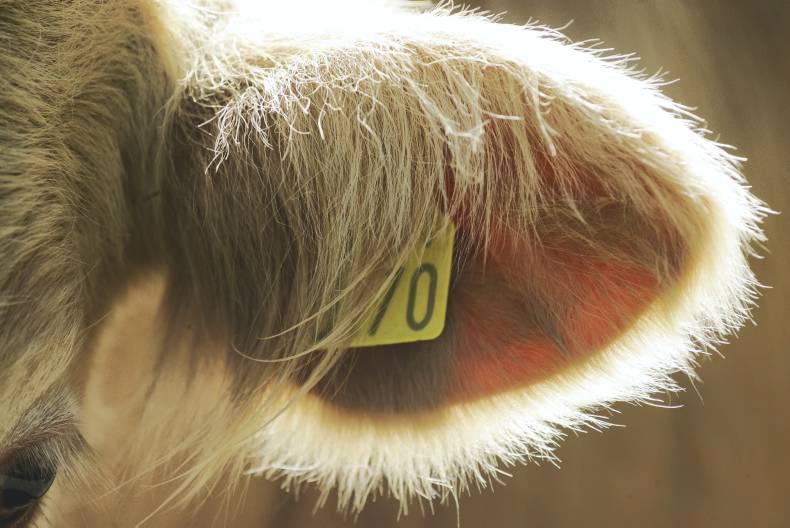ICOS, which represents marts across Ireland, listed a series of benefits that the electronic identification (EID) system brings, ranging from improving our cattle traceability system to better health and safety assurances for farmers and mart staff.
Bovine EID uses radio frequency identification technology, which is already used extensively in the identification of dogs and sheep. EID is required in all breeding sheep born after 1 January 2010 and on all dogs born since 1 June 2015, with all dogs required to have it from 31 March 2016.
Under the proposed EID system, a unique code is implanted into the standard ear tag already used for identifying cattle. This implant is called a transponder. A hand held device passed over the transponder generates all the data associated with the animal.
In terms of making it harder for cattle rustlers to operate, thus improving cattle traceability, ICOS admitted that it would still be easy for cattle rustlers to work successfully if the transponder is placed in a standard ear tag, as the tag could just be cut off as tends to happen now.
However, it added that with EID there is scope for a GPS system to track the animal via the transponder before the tag is cut off. ICOS added that the transponder can also be placed below the skin of the animal, which would make cattle rustling almost impossible.
Cost
According to ICOS, the cost of placing the transponder in a standard ear tag would be an extra €1 or so per tag more than farmers are already paying. However, it added that were the farmer to choose to place the transponder under the skin, the cost would likely be a little more.
Transponders can be low frequency (LF) or ultra high frequency (UHF), with LF ideal for close-range single readings or for farmers with a smaller herd, while UHF offers increased range and larger data storage possibilities, such as the storage of information relating to the medicines administered to animals. This immediate and accurate generation of data would also help farmers with cross-compliance issues, ICOS said.
Health and safety
In their presentation, Michael Spellman and Ray Doyle of ICOS also said that EID would greatly improve health and safety issues around mart staff handling cattle in the ring in order to obtain the number of their tag. This is due to the fact that with the EID system in place, a handheld device only needs be passed over the cattle for the data to become available.
Spellman and Doyle said the same benefit could be applied to farmers who might frequently be in a position where they have to clean dirty tags to identify the code, thus increasing their interaction with cattle. ICOS pointed out that cattle-related deaths in Ireland account for 12% of all farm fatalities.
The EID system could also do away with the need for bovine passports, according to ICOS, and thus save the Exchequer between €7m and €8.5m per year.
AIMS
Passports for cattle are currently used as part of the bovine animal identification system (AIMS), which incorporates four elements to identify and trace cattle. The elements are ear-tagging, bovine passport, on-farm bovine herd registers and a computerised database.
Spellman said the bovine EID system that ICOS is proposing could not take place without the already effective AIMS Ireland has in place. “AIMS is the best in class for tracking movements. Bovine EID could not work without AIMS.” He added that the use of EID to enhance AIMS is a “no-brainer”.
Demonstrations
In 2013, ICOS held three demonstrations in Enniscorthy, Roscommon and Fermoy marts, from which it says most of the feedback was positive. Australia and New Zealand have adopted full EID traceability and Scotland is planning a three-year trial supply chain trial to demonstrate EID’s benefits, starting in 2016.
Reaction from sheep farmers
In response to questions from the agriculture committee members on how sheep farmers have reacted to the EID tagging of breeding ewes since it was introduced in January 2010, ICOS said it had not heard of anything negative except in relation to the welfare issue of putting heavy tags on young lambs.
However, following a review of the National Sheep Identification System in July 2015, which included a proposal for full implementation of EID across all sheep, an IFA meeting of sheep farmers heard strong opposition from those present to the proposal. There was a clear consensus that while EID may have benefits at mart and factory level, it was farmers who once again had to bear the brunt of additional costs of electronic tagging. A number of speakers said that instead of increasing recording requirements, the target should be to take a step back and move to a flock tag to facilitate more straightforward recording for an ageing population of sheep farmers.
And, yet, writing in the Irish Farmers Journal a couple of weeks later, sheep farmer Brian Nicholson espoused the benefits of the EID system.
As for the reception to ICOS’s proposal from the agriculture committee, chair Andrew Doyle said the committee would send a letter to Minister for Agriculture Simon Coveney, saying it agrees with the general principles of EID tagging for bovines. “There is huge potential here if it’s done right,” Doyle said. However, he added that farmers need to be aware of greater costs associated with buying handheld devices to read data and choosing a different option to the transponder placed in the standard ear tag.






 This is a subscriber-only article
This is a subscriber-only article











SHARING OPTIONS: